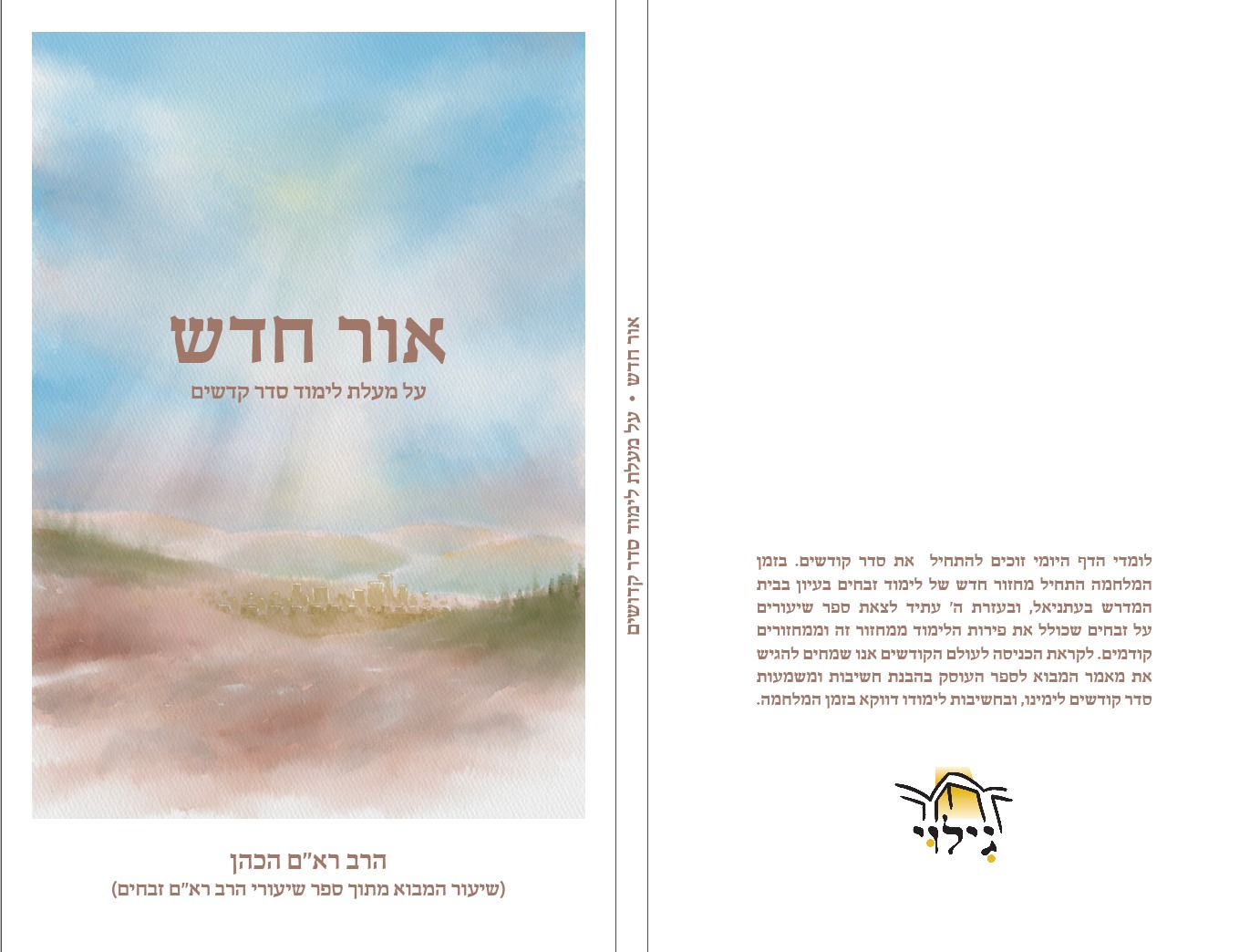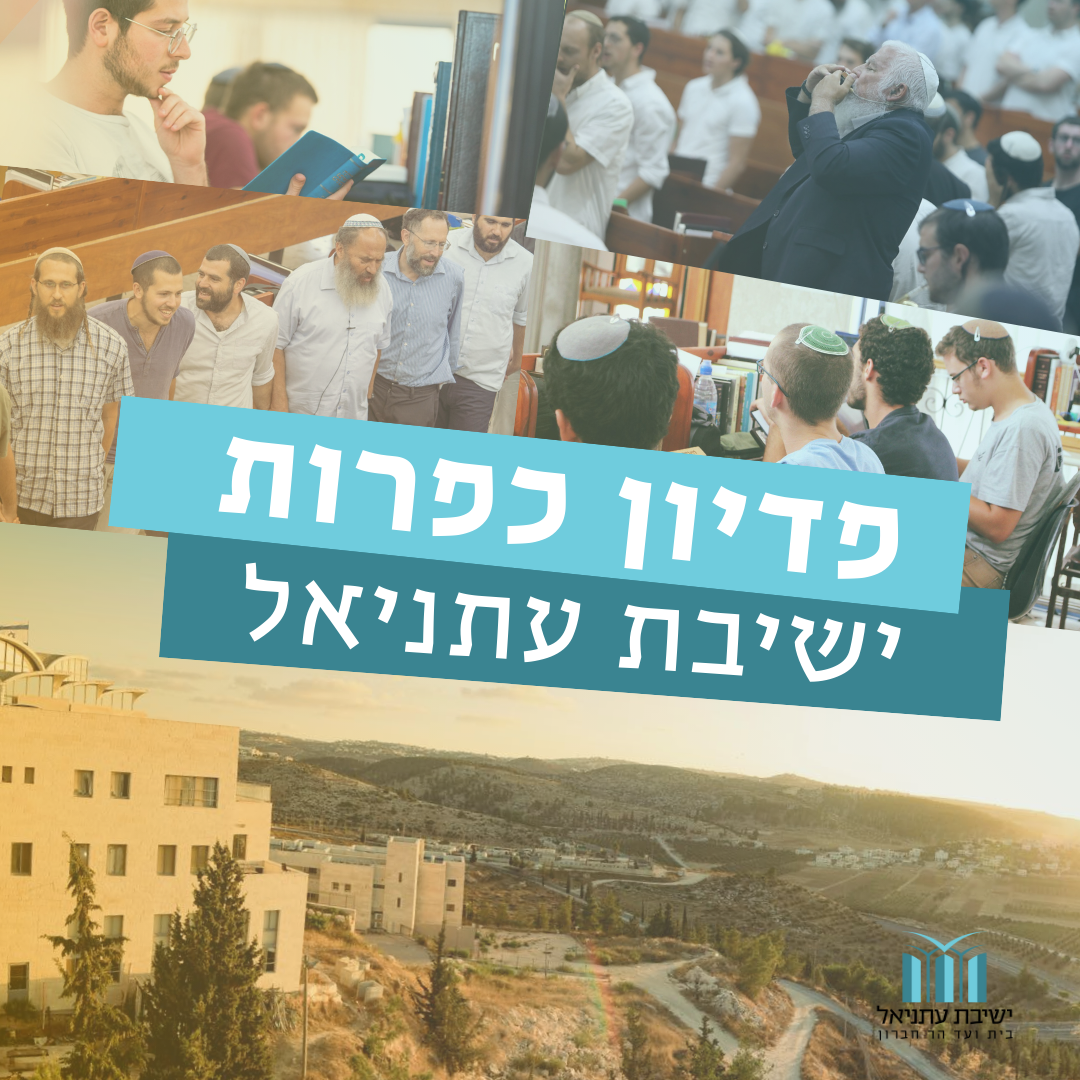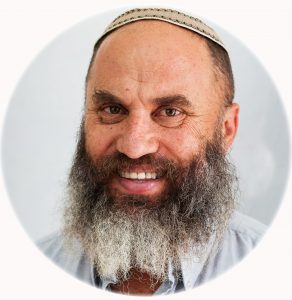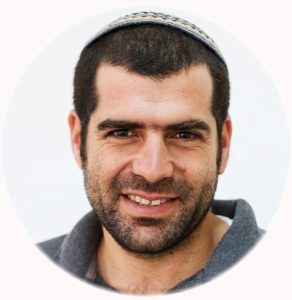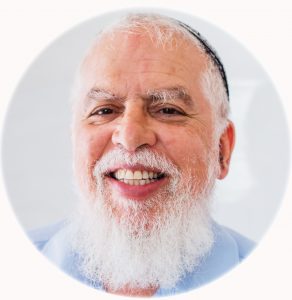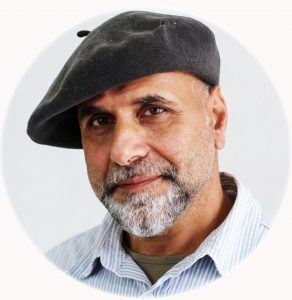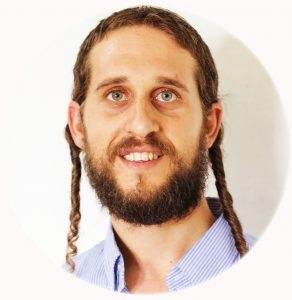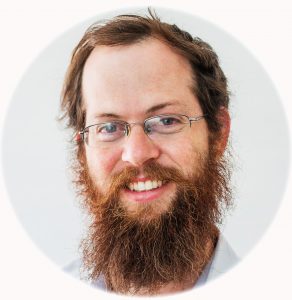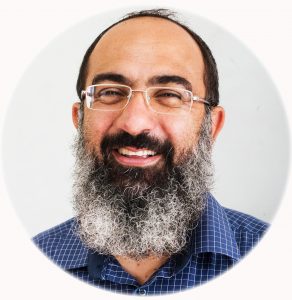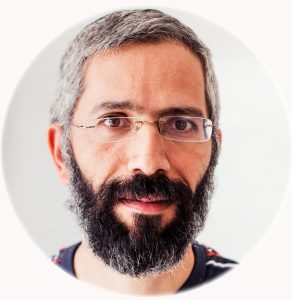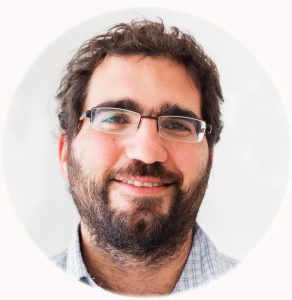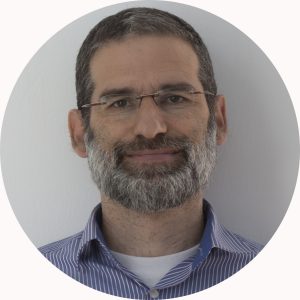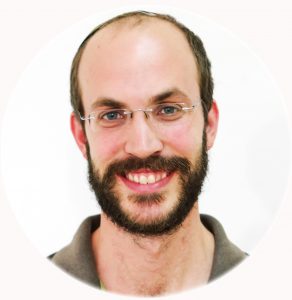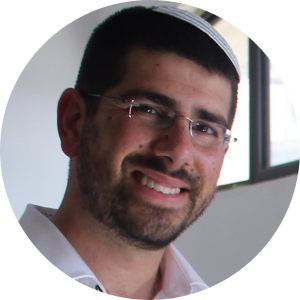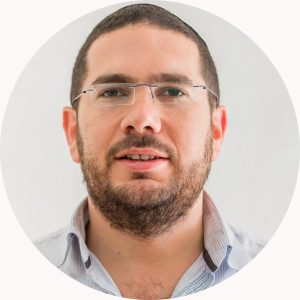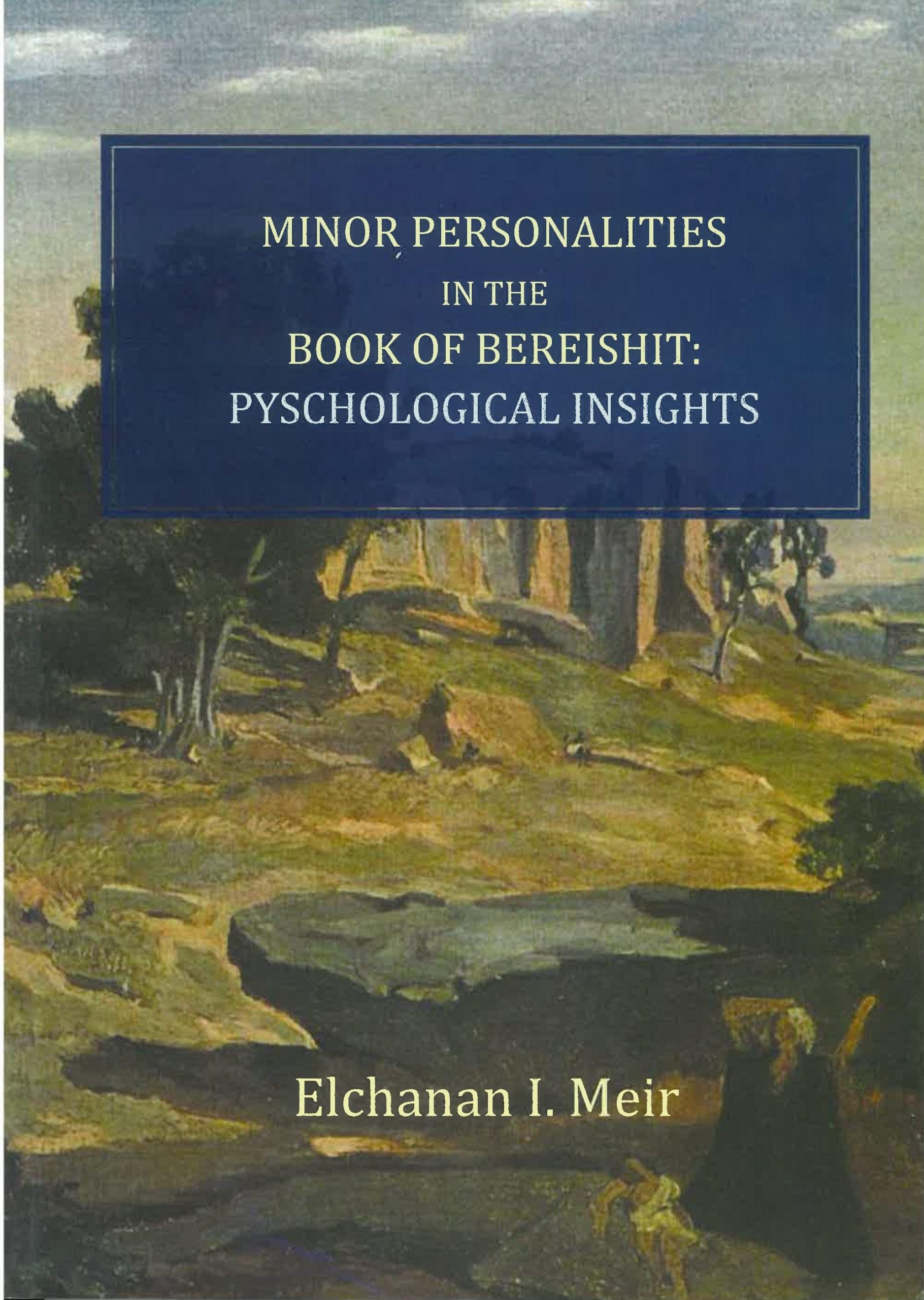נושאים
Translated by Netzach Sapir
My teachers taught me that the first four parshas of the book of Bereshit, “Bereshit,” “Noach,” “Lech Lecha” and “Vayera,” are a summarized guide to spiritual enlightenment. From one’s initial phase, “Bereshit,” one must come to a place of “Noach,” a place of calm and tranquility. From there he can continue to “Lech Lecha,” the phase of journey. The double language of “Lech Lecha,” “go unto yourself,” teaches that the journey is a journey inward, and through this process a person comes to “Vayera elav Hashem,” the revelation of G-d, enlightenment. This week, parshat Lech Lecha, we will study the aspect of the journey itself.
A Journey Inward
In the beginning of the parsha Hashem calls to Avraham “lech lecha from your land and your birthplace and your father’s house” (Bereshit 12:1). The Holy Zohar explains that the double language of “lech lecha” calls on a person to embark on a journey into himself: “lech lecha unto yourself…to know and to fix yourself” (Lech Lecha 67b-68a). In an awesome teaching in Orot HaKodesh, Rav Kook explains that when a person arrives at an understanding of himself, he discovers G-d:
“And I am in exile” (Ezekiel 1:1), The internal “I” of self… We have sinned with our fathers. The sin of Adam HaRishon was that he became disconnected from his true self. He conceded to the snake’s advice, lost his self-ness, and was thus unable to give a clear answer to [G-d’s] question “Ayeka?” “Where are you?” for he did not know his own soul, for his true self was lost from him… And so the world continues and submerges in the lost “I” of every individual… “the breath of our nostrils, G-d’s anointed” (Eichah 4:20)… it is not external to us, it is the very breath of our nostrils. Hashem our G-d…we will seek…our “I” we will seek, our own selves we will seek and we will find… I am G-d” (Orot HaKodesh 3, p.140-141).
Rav Kook identifies Ezekiel’s declaration “I am in exile” not as a geographical remark but as an existential statement. “I,” my true identity, is in exile, outside of myself. This is the basic sin of Man – disconnection from himself. In our society disconnectedness between people is very common, but according to Rav Kook the original problem is a person’s disconnectedness from his own self, which makes him unable to answer G-d’s question, “where are you?” From here Rav Kook makes a bold and awesome statement – when we seek and find the “I” of ourselves, we will discover that “I am G-d;” we will discover that G-d is present within us. When I am true to myself, I discover that the reality which is beyond this one, the sacred, the source of all life, are all revealed within me. G-d exists in me and I exist in Him.[1]
Ekhart Tolle, spiritual teacher and author of The Power of Now, relates that once he was seized by frustration that “I just can’t get along with myself!” Suddenly he had a revelation. He realized that there was deep truth in that sentence; “I” and “self” aren’t just two different expressions of the same thing, they are two different levels within a person which sometimes contradict. According to him, one of them is a person’s true identity, and the other is the identity from which a person struggles to release himself.
Rav Kook presents a similar idea but within a religious perspective, where he sees the authentic, true self as G-dliness. Rav Kook’s idea follows from the belief that Man is created in “G-d’s image” (Bereshit 1:26-27), and identifies between a person’s “internal self” and his G-dly identity. This desire to connect to the internal self as a path to discovering G-d is shared by the Upanishads, the Hindu sacred texts. According to the Upanishads, the purpose of Man is to understand that Atman, the internal self, and Brahman, the infinite – are one.
Though Judaism and the Upanishadic religions share this understanding, the conclusions they draw from it differ sharply. The key question is “What is Man’s purpose on earth?” The Upanishads teach that Man has the ability to transcend the physical world – which is nothing but an illusion (“maya”) – through self-awareness. One who is unable to “release” himself from the illusion of the “maya” is reincarnated to try his luck at it again. Man comes into the world in order to transcend it. Judaism, on the other hand, sees the descent of a soul into the world as a mission. Humanity is tasked with the heavy responsibility to improve and perfect reality. In his prayers, a Jew promises three times a day to try to repair the world in the sovereignty of G-d.
The Zohar explains (Lech Lecha 77b) that “lech lecha” can also be understood as G-d’s instruction to a soul, which is called on to abandon its natural abode in the heavenly domain and to descend earthward. G-d gives the soul the ability to carry out its task – to serve, guard and fix. With this mission, G-d also promises the soul a blessing, just as Avraham, immediately after being told “lech lecha” is blessed: “and I will make you into a great a nation, and I will bless you and I will make you great, and you will be a blessing” (Bereshit 12:2).
These two understandings of “lech lecha” once again bring us into contact with the question about the nature of the relationship between “being” and “doing,” between the motion inward and the motion outward. I think that the answer to this question lies in the acknowledgment that through doing we experience things and come into contact with reality. Giving is always bi-directional, even though on the surface it seems to be only a motion outward. A person is defined by his actions. A person discovers himself and improves himself through his interaction with the world around him, not through his isolation from it. He discovers himself in his daily toil to sustain his family, through raising children and through his positive actions and his efforts to improve society. It is plain to see that actions do not always bring about internal awareness. The nature of doing is that it calls Man’s attention to that which is external to him, to that upon which he is acting, the world of doing. In order to draw conclusions from his actions and involvement in the physical world and to draw them into his spiritual world, a person must have self-awareness. My friend Erez Nir once explained that there are two trees in Gan Eden – the tree of knowledge and the tree of life. Judaism believes that the ideal is to connect the tree of knowledge, which is awareness of self, with the tree of life.
When Avraham Met Brahma
The last time I was in India, I traveled to the city Haridwar in the north of the country, to the ashram of Anandamayi-Ma, one of the great gurus of the previous century. The president of the ashram at the time was Vijayananda, an elder guru, ninety-two years old. Vijayananda was not his original name; he was born with the name Avraham Yaakov Weintrob, son of a rabbi living in southern France. Like the Avraham of the Torah, Avraham-Vijayananda also once stood at the crossroads of “lech lecha.” Before coming to India, Vijayananda had planned to move to Israel. During the War of Independence, he tried to volunteer to fight in the Hagana, but was deterred (it turned out that one of the recruiters in France was a relative of his and feared putting him in harm’s way.) Although young Avraham grew up in a religious house, he was an atheist. One day his discovered a book of Indian philosophy which described the path to “discover G-d within yourself.” The idea ignited him, and he decided to travel to India to learn more about it. He arrived at Anandamayi-Ma’s ashram, and though they generally do not accept students from the west, the teacher felt that this was a special person standing before her, and before he even requested it, she decided to meet with him and accept him into her class. Eventually, she even appointed him to be her successor. Vijayananda has been living in the ashram for the last fifty-five years without leaving India. When his journey began, there were two paths before him, and they fit the Zohar’s two interpretations: “lech lecha” according to its straightforward meaning, journeying to Eretz Yisrael and fighting for his people, or “lech lecha” as an introspective search, a journey inward unto the self.
I entered his modest room. A number of Jewish books on his shelf immediately caught my eye – Tanach, Tanya, Sfat Emet, Simcha Raz’s Chassidic Stories, and a biography of Ariel Sharon. Vijayananda feels that he never left Judaism, and feels no contradiction between the Indian Videnta philosophy which he practices and his Jewish upbringing. One of his students told me that she once asked if it were true that he was once Jewish. Vijayananda straightened up proudly and declared, “I am Jewish!” Though he never visited Israel, he feels deeply connected to that which goes on here. He had a subscription to the Jerusalem Post and some of his students who live in Israel call him occasionally to keep him up on the goings-on in the country. He sang me an impassioned rendition of Naomi Shemer’s “Yerushalayim Shel Zahav.” I asked him if he had any advice for me from his experience on his spiritual journey, and he responded: “There are many paths to top of the mountain, but if you keep switching paths along the way, you’ll never get there. A person must commit himself absolutely to one path according to one’s own tradition.” There is something to be said for maintaining interest in many different paths: it allows one to acknowledge the value of others’ paths and to respect them, it can even assist someone in his own spiritual journey. But at the same time a person must have a single path to which he dedicates himself, otherwise, for all his knowledge of others, he will have no wisdom for himself.
After my meeting with him I pondered the advice he had given me. Clearly, having remained fifty-five years in his ashram, he was a living example of sticking to one path. But what of the other piece of advice he gave me, the importance of picking a path “according to one’s own tradition?” Was this is an expression of regret over the path he did not choose? And perhaps, had he known at the time that the same spiritual ideas which brought him to India exist in Judaism as well, would he have chosen differently? Suddenly I imagined what could have been: The Admor Avraham Yaakov, surrounded by grandchildren and students, the light of his Torah guiding the multitudes of Israel. I was saddened – both for the old man with whom I very quickly fell in love, and for Am Yisrael, who did not merit to be enriched by a person who was blessed with a great Neshama. I felt that I must return to speak with him further.
The second time I visited him, my taxi got stuck in traffic and I had only a few minutes before the train to New Delhi. As we separated, we looked at one another and we both understood that this would be our last meeting. As I stood to leave, Vijayananda requested of me: “when you get to the Kotel, pray for me.” On chol hamoed Sukkot I went up to Jerusalem, and when I got to the Western Wall, I fulfilled Avraham Yaakov’s request and prayed for him.
Four years later he left this world, and despite the dominant practice in India – especially among holy men – he requested that his body not be burned but be buried in the ground. The people of the ashram decided to honor his unusual request, which stemmed – without doubt – from his desire to be buried according to Jewish tradition. As such, his body was transferred to France for burial by his Jewish family, who even said “kaddish” at his grave.
[1] I found a hint to Rav Kook’s idea in a passage in Tehillim (27:8): “To you my heart said seek my face, your face, G-d, I shall seek.” The verse opens with a person’s heart calling out to him to seek its face, (my heart said: “seek my face”), and in the end the person discovers that the search for the face of his heart is none other than the search for the face of Hashem (“your face, G-d, I shall seek”).









